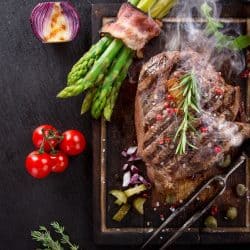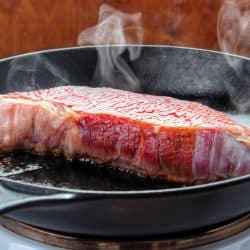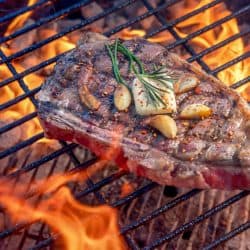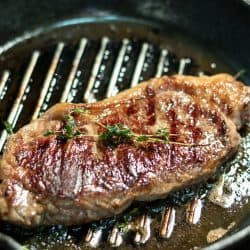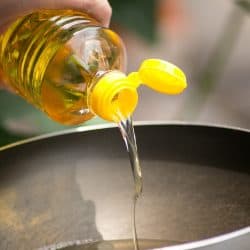Most of us drool at the thought of a juicy cut of steakhouse grub. But if you're trying to prepare a steak at home, you've probably wondered whether it should be cooked in butter or oil. Well, we've sliced into the meat of the research and have some delicious answers for you!
The age-old debate of butter versus oil in regard to preparing steaks boils down mainly to how it's being cooked and your personal choice. Butter provides the richest flavor. However, it reacts poorly to the high temperatures used on beef and is best used for basting in a skillet. Oils are more stable against breakdown in the heat and are fantastic for grilling and pan-searing.
So, what are the pros and cons of using oil vs. butter? Why is smoke point important? Should you oil the steak or the pan? How does Gordon Ramsay cook a steak? Keep reading for some hot tips on prepping your perfect steak!
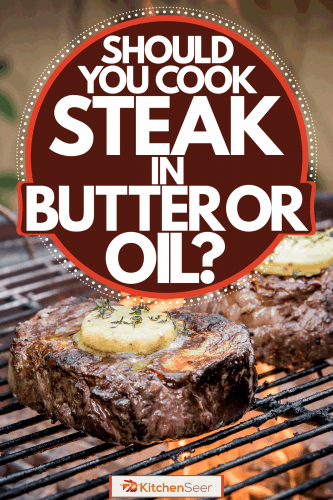
What is the smoke point in cooking, and why does it matter?
Before we get into the fine details, it's essential to explain smoke points. The term refers to the temperature at which a fat or oil will begin to burn or smoke. This can not only destroy any beneficial nutrients, but it imparts burnt flavors into your meat. Not to mention it will fill the kitchen with smoke! Steaks are traditionally prepared at very high heat, so keep that in mind when you're deciding on your coating.
Butter vs. oil showdown
Both butter and oils have their place in the meat cooking process. But, as in everything in life, there are pros and cons to each. Let's take a closer look at some popular choices.
Butter
This yellow spread wins all the points in deep flavoring. It can't be beaten. However, that's everything butter has going for it in this contest. It's higher in saturated fat, cholesterol, and calories than any of the oils, making it reasonably unhealthy for the heart. Also, butter has a low smoke point of about 300 degrees, starting to burn and smoke at a very low temperature.
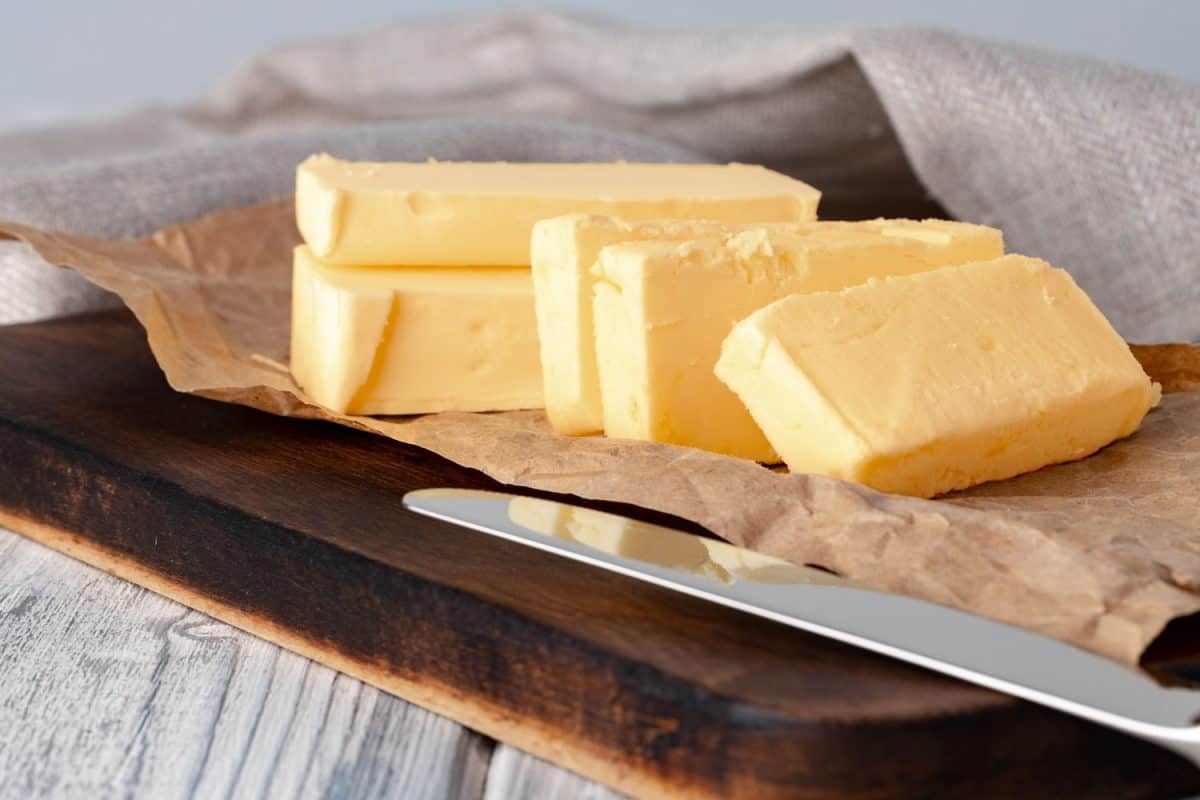
Margarine
Margarine is a great substitute for regular butter, as it's a vegetable oil product rather than an animal one. It's lower in saturated fat but still has great flavor. You can find salt-free and fat-free variations of it, as well. Some have trans fats, though. This product has a higher smoke point than its counterpart at roughly 410-430 degrees.
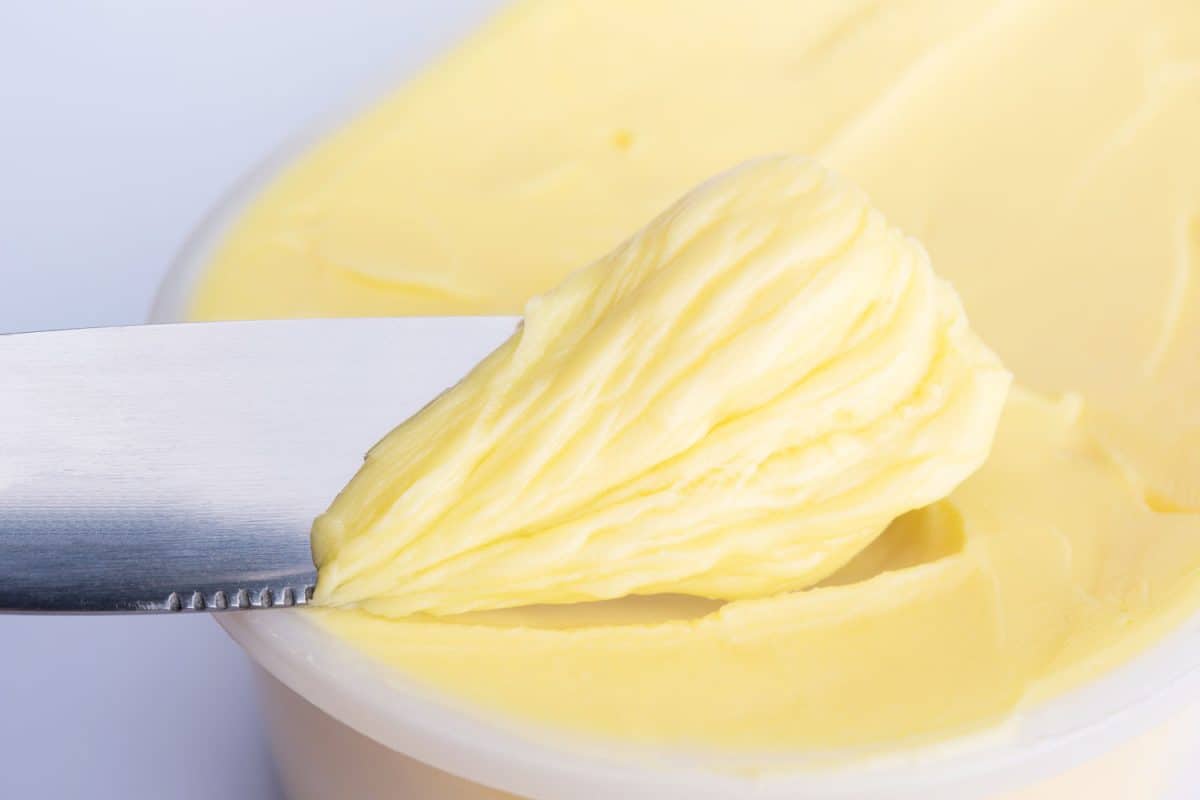
Olive oils
There are several types of olive oil, including but not limited to extra-virgin and extra-light. They are quite heart-healthy, containing good fats and no cholesterol. However, they do offer a less pronounced taste than butter and can sometimes be pricey. We highly recommend extra-light olive oil for steaks if you go this route, as it possesses one of the highest smoke points at around 468 degrees.
Click here to see it on Amazon.
Vegetable oils
Vegetable-based oils include canola, sunflower, corn, soybean, and others. They are, perhaps, the most inexpensive item on the list today. This is their only major perk, though. These oils tend to be refined and overly processed, which means there's little to no nutritional value left. While the smoke points range from 400-450 degrees, the breakdown of their contents over long cooking times can produce a rancid, fishy aroma and flavor.
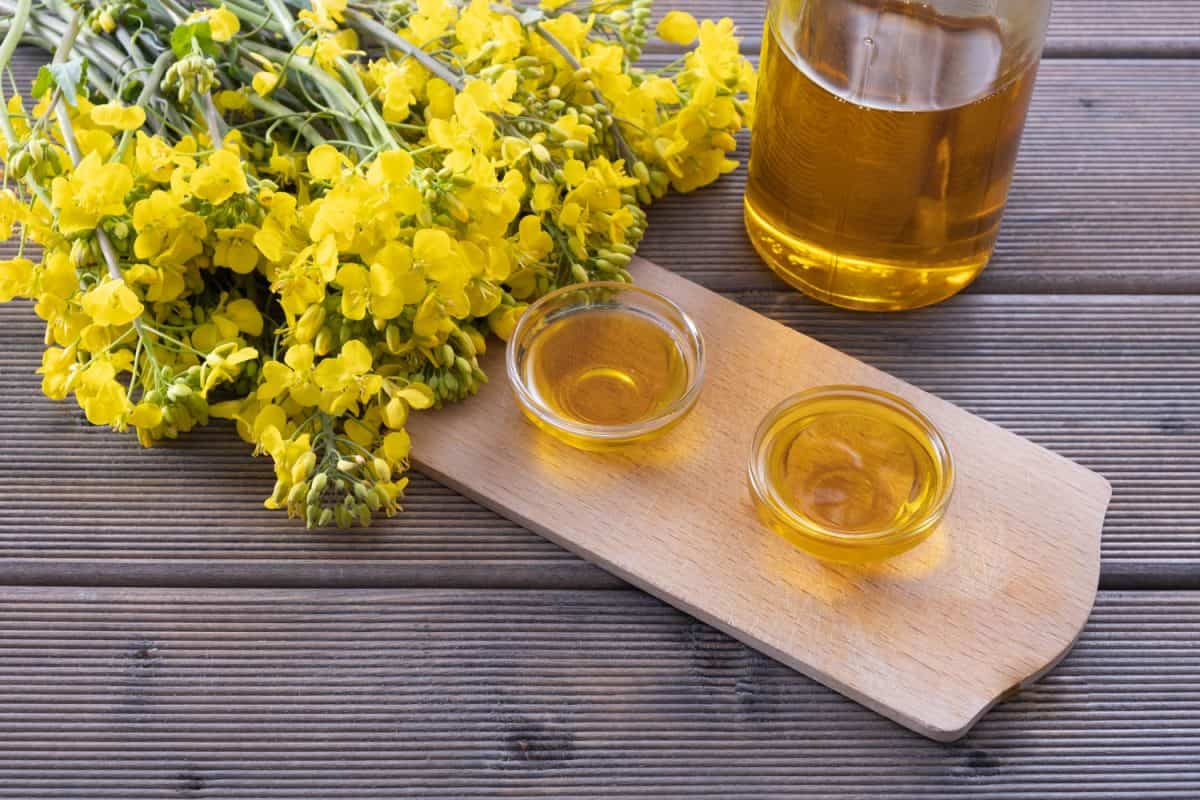
Avocado oil
Avocados are a superstar in the food world, so it's not surprising that avocado oil is fantastic. Able to withstand a 520 degrees smoke point, it far surpasses the other items we've mentioned in that arena! This oil is loaded with polyunsaturated and monounsaturated fats, which your heart will thank you for. It also contains vitamin E, and its mild flavor won't overpower your meal. The only actual con to this oil is the price, as it is somewhat costly compared to other options.
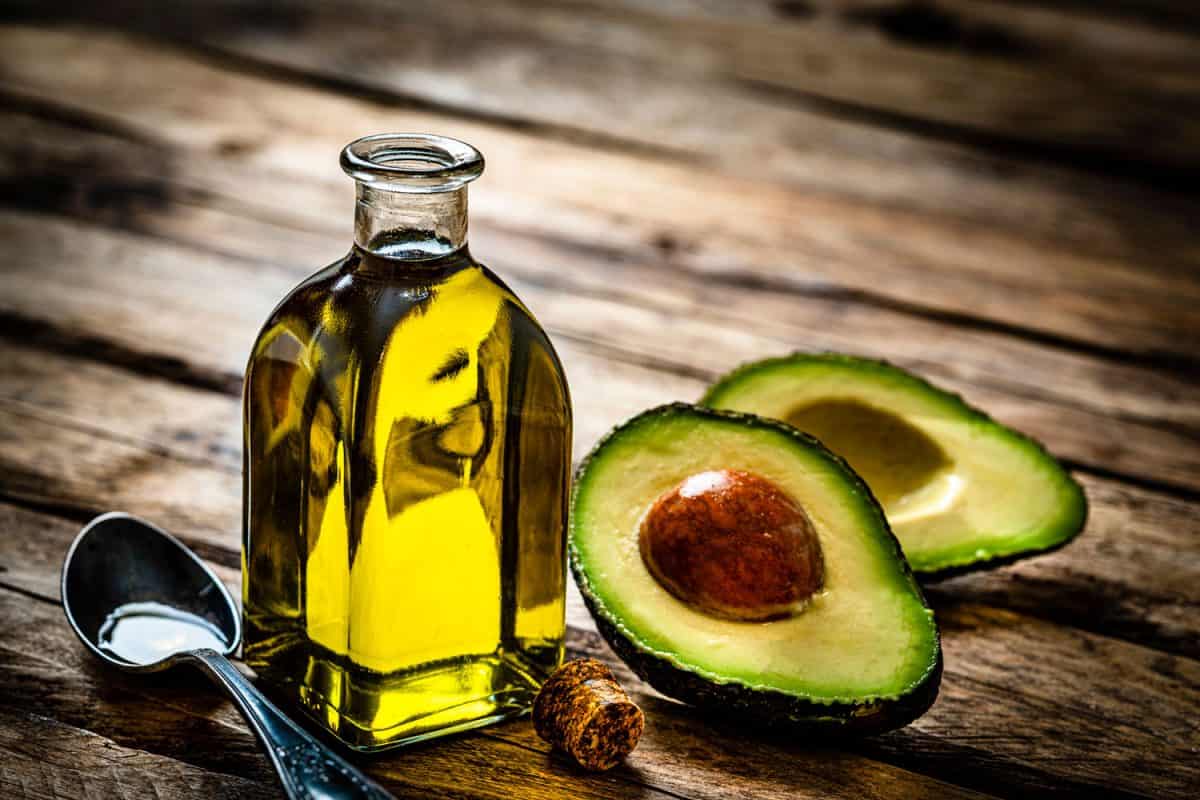
Grapeseed oil
You may not have heard of this little jewel before, but grapeseed oil is versatile and good for you! It's created from the seeds of discarded grapes when making wine. It has a simple, clean taste and contains omega-6 fatty acids, recommended in moderate amounts. The smoke point is roughly 420 degrees.
Peanut oil
If you don't mind a nutty taste, peanut oil can be a great choice. Its monounsaturated amounts are among the highest in cooking oils, and it has a reasonable smoke point of 450 degrees. On the downside, it is moderately expensive. If you have an allergy to peanuts, please don't consume this without speaking to your physician first.
Click here to see Peanut Oil on Amazon.
Should you cook steak in butter?
You can cook your steak in butter if it's your preference. It's hard to deny that wonderful, fatty flavor it adds to your dish. But remember, it burns easily, so we don't recommend using it for grilling. However, basting butter over steaks in a pan has delectable results!
Should you cook steak in oil?
Oil is also a great choice in cooking. Most of them easily contain more health benefits than butter, especially avocado and olive oils. It's undoubtedly the better option when it comes to breaking out the grill. When using them inside, don't forget to open your windows first because you will get some smoke!
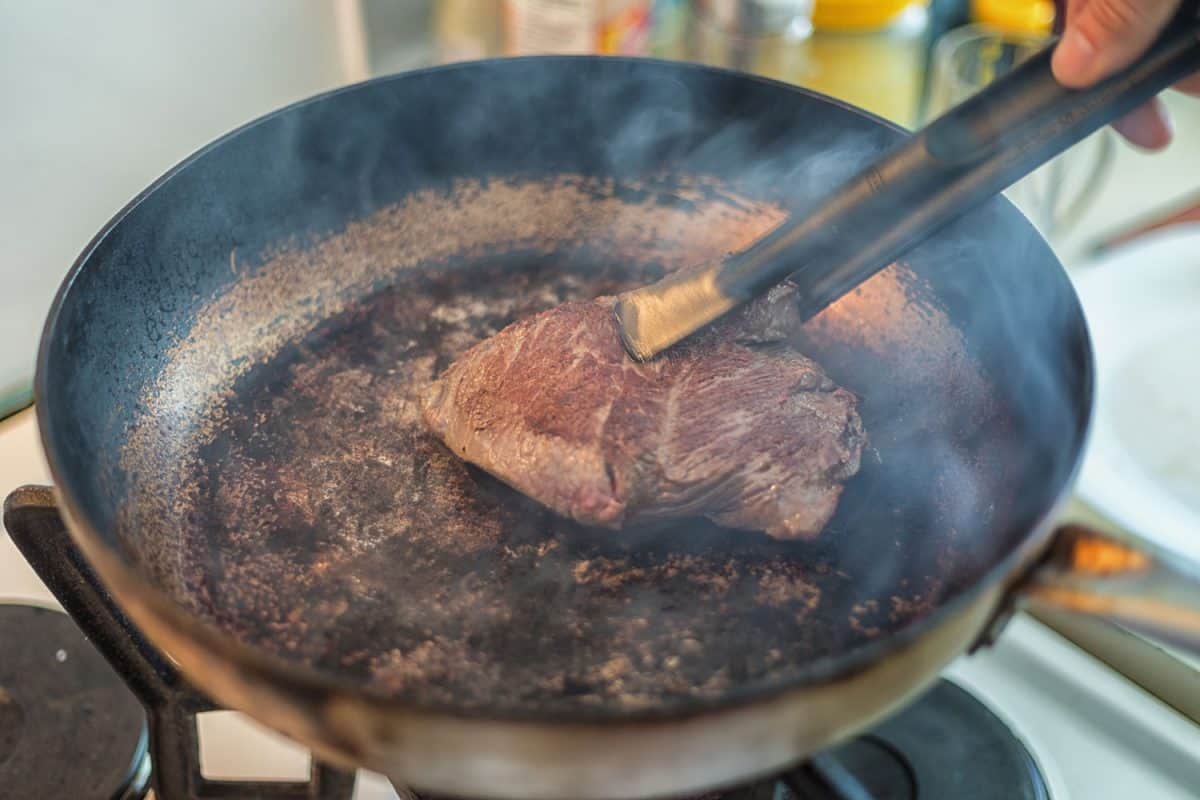
What oil is best for cooking steak?
While it's always your personal decision, the consensus amongst chefs seems to lean towards those with the best health benefits and highest smoke points. These include extra light olive oil, avocado oil, peanut oil, and grapeseed oil. Choose the purest concentration available with the least amount of added ingredients. Less is more in this case.
Should you oil the steak or the pan?
Oiling your steak versus the pan is yet another argument in the culinary world. Some say that the meat should be oiled; others swear a nice dollop in the pan works just as well. In researching this article, we noticed it done both ways by popular chefs. Although a greater number advise oiling the beef for a more even cook, it does seem to come down to personal preference.
What is the best method for cooking a steak?
There are several equally amazing ways to go about preparing your dream steak. It all depends on what you're looking for and how much time is available. Let's name off the major players in the game!
Grilling
Arguably the most popular option is the backyard grill. Not only does it make for a fun cooking experience, but the charcoal gives the meat a hint of rustic, smoky taste. Grilling is technically easier than combination stove and oven processes; however, any man will tell you it still takes some practice.
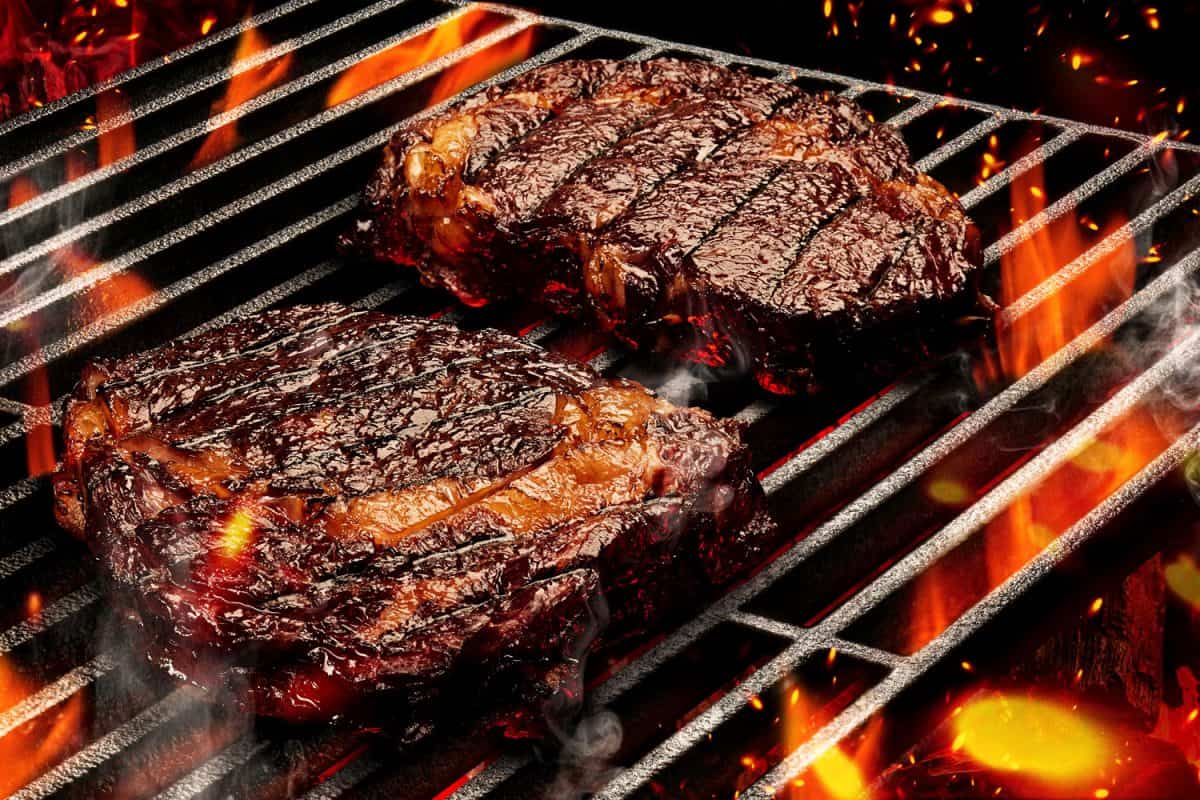
Pan-Sear & Roasting
If you like excellent outer crusting on your steaks, searing in a pan and finishing in the oven is an option. You'll be cooking at high heat with a cast-iron skillet, around 500 degrees. This method requires butter or oil to aid in juiciness and flavor. Sear off both sides of the cuts and then slide the pan in the oven for it to cook thoroughly.
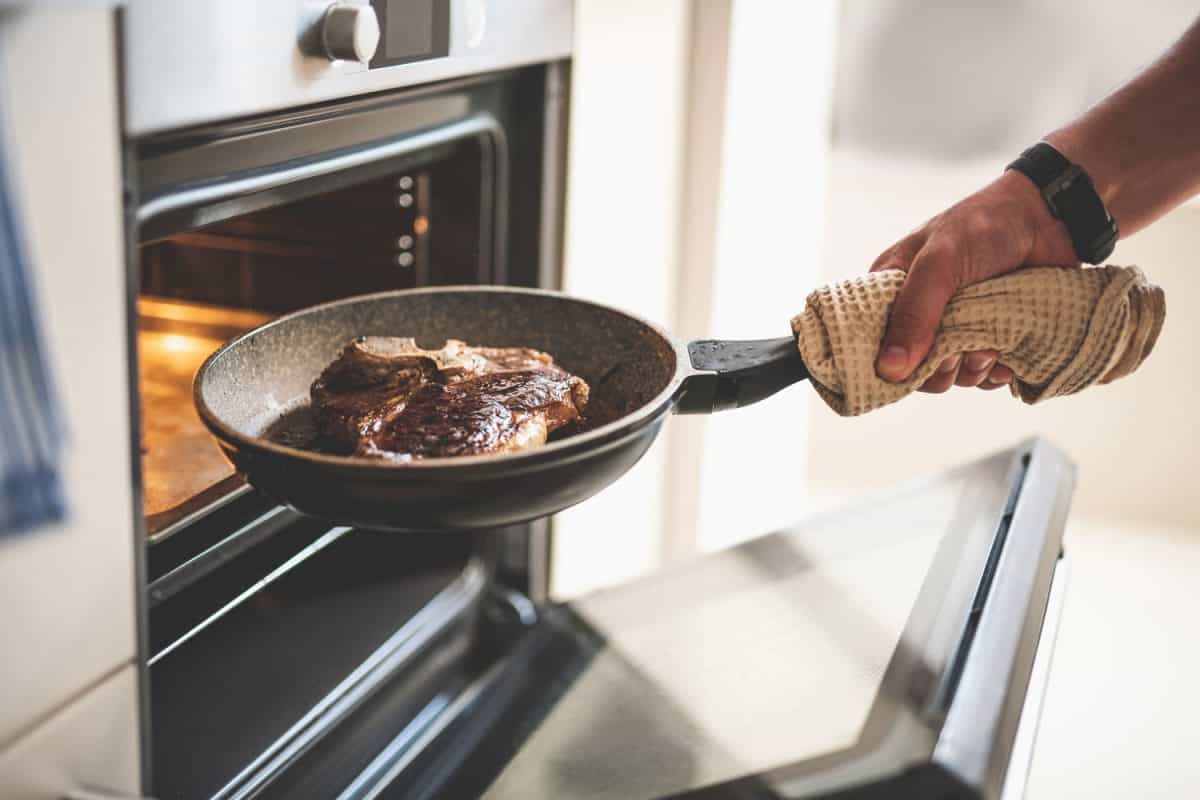
Pan-Frying
Frying in a pan is an effective approach for those who adore a browned, crispy steak and the taste of butter or cooking oil. The drawback here is that it can be more challenging to bring the internal temperature of the meat to where it needs to be without overcooking it. Because the pan continues to retain heat, it can be imprecise.
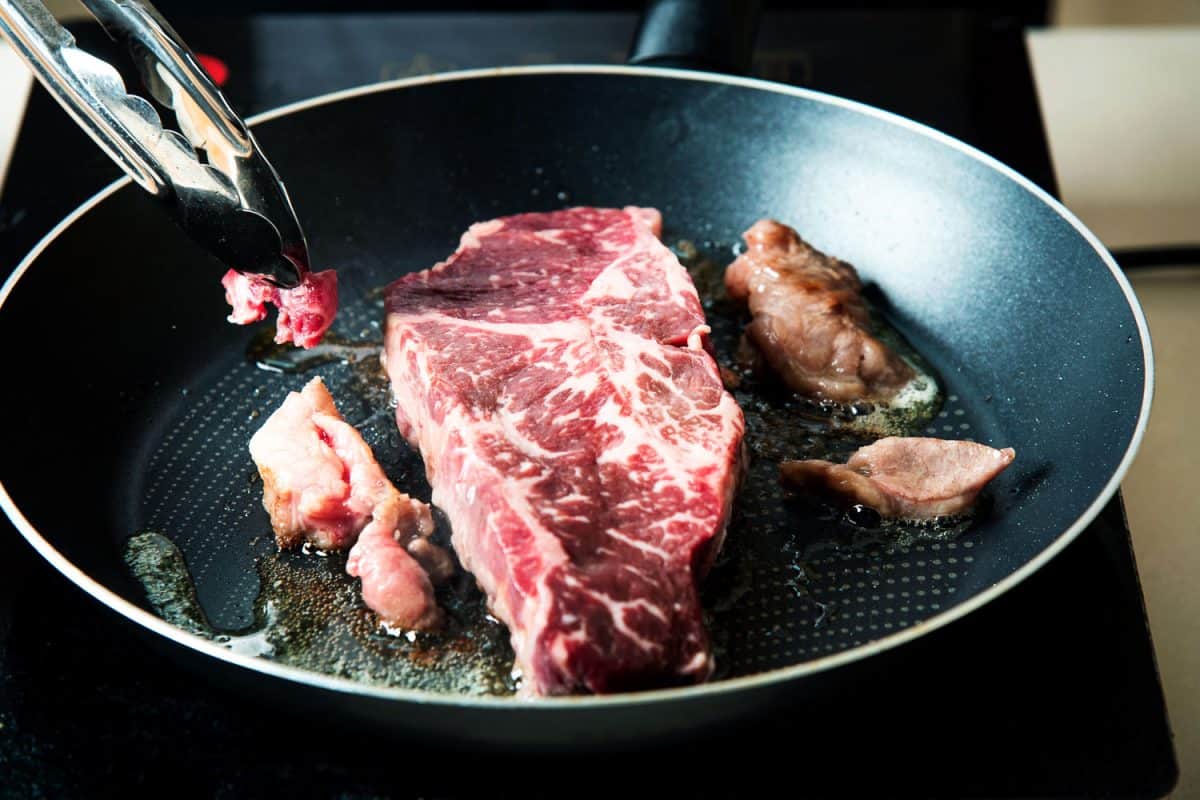
Sous Vide
While we can't blame you if you haven't yet heard of it, Sous vide allows for the most precise cook of any method out there. It's easy to do, and the results are amazingly juicy and flavorful. It involves leaving your food (in a vacuum-sealed bag) for an hour in temperature-controlled water. You then sear it off and enjoy! While the initial setup equipment may seem costly, the results speak for themselves.
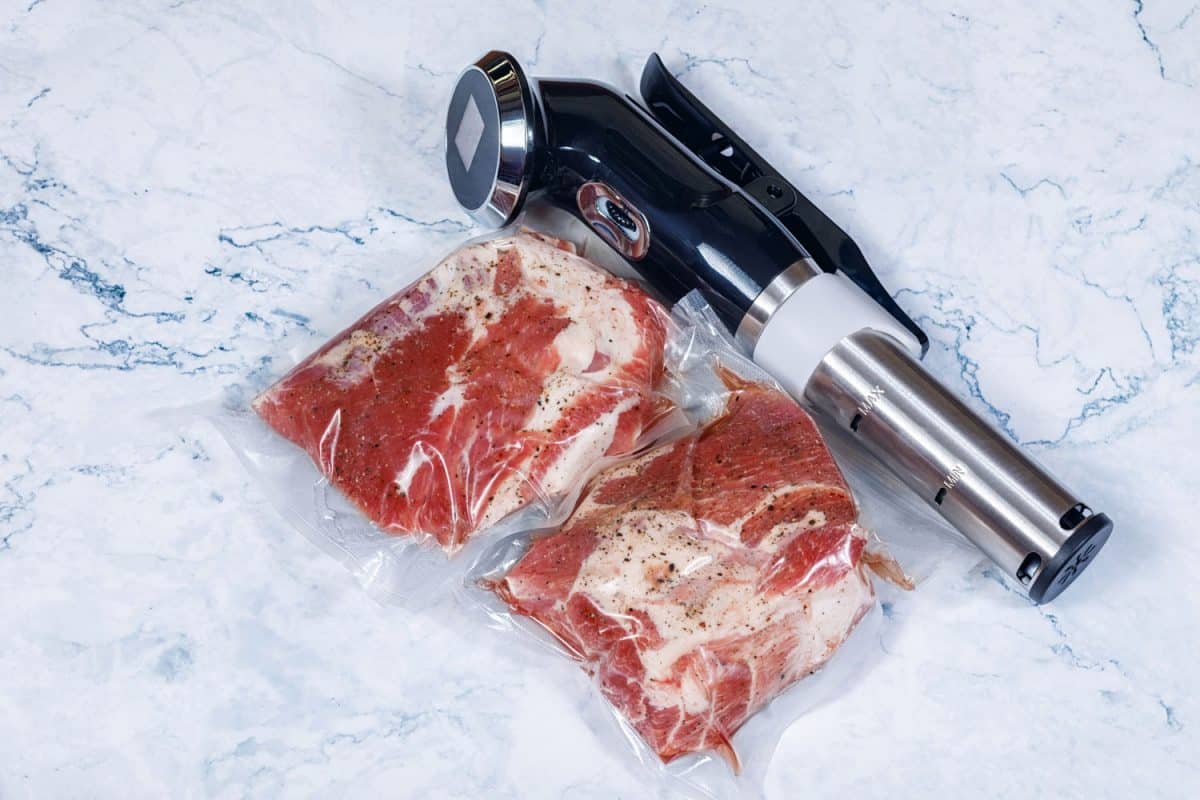
How does Gordon Ramsay cook a steak?
Chef Gordon Ramsay has some important pointers on cooking the perfect steak. Let's see what they are!
- Allow your steak to fall to room temperature first. If the center isn't as cold, it will cook faster.
- Open a window and turn on the exhaust fan for the smoke before you begin.
- Use an iron pan, and get it super hot.
- Wait for the oil to heat through and start smoking before adding the steak.
- Only flip the meat once to retain juices.
- Baste with butter.
To see his recipe and watch a full walkthrough, you can visit Gordon Ramsay Cookalong- "How to Cook a Perfect Steak."
In Summary
In the end, whether you choose oil, butter, or both to cook a steak in, it's your call. Tantalize those taste buds and employ whatever method makes you salivate!
Can You Cook A Steak In A Nonstick Pan?
Which Oil Is Best for Searing Steak?



